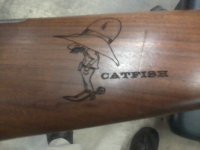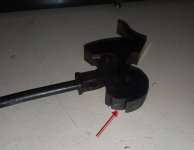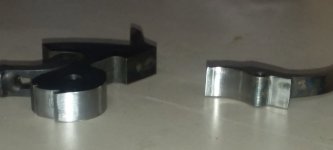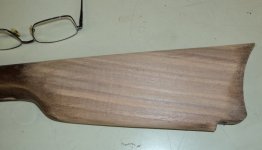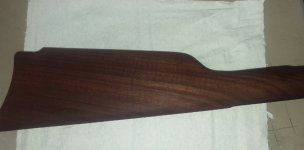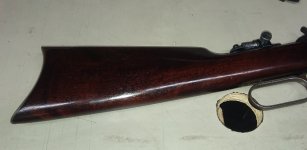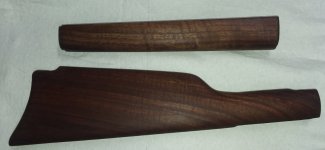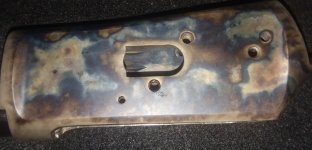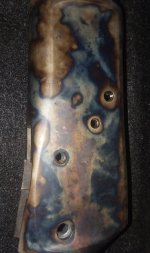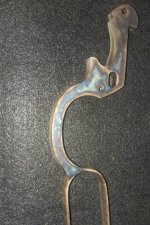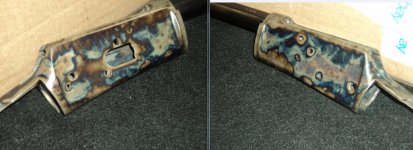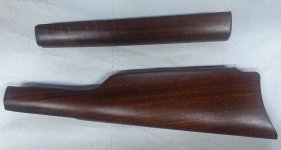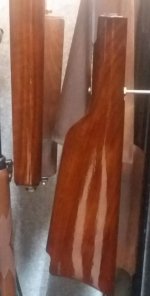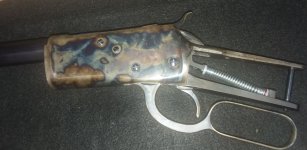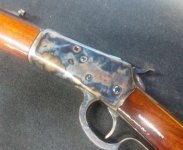Rooster Leghorn
Inactive
Hi all. New guy here who loves lever guns of all makes/models but especially those with tube magazines.
I have a Rossi/Navy Arms M92 in .44-40 rifle project underway. The gun has a 24" octagonal barrel, genuine American black walnut furniture, and a (chemical) case colored receiver frame as originally equipped. This gun shot quite well and has been a favorite of mine over the years. I bought it used about 6 years ago for about $400.
Recently I've had to give up my classic car repair hobby due to a nagging back injury but needed something to fill my "garage time" on the weekend mornings. I decided to cosmetically refinish the Rossi with real bone charcoal case color hardening (CCH) on the receiver frame and lever along with refinishing the furniture to match early Winchesters. The barrel is in good shape and will be left alone.
For some reason a previous owner had a garish (to me) logo or cartoon burnt into the right side of the rear stock. This had to go. Also planned is to smooth up the action a little to get rid of the rough hammer movement and install some lighter springs. More to come....
I have a Rossi/Navy Arms M92 in .44-40 rifle project underway. The gun has a 24" octagonal barrel, genuine American black walnut furniture, and a (chemical) case colored receiver frame as originally equipped. This gun shot quite well and has been a favorite of mine over the years. I bought it used about 6 years ago for about $400.
Recently I've had to give up my classic car repair hobby due to a nagging back injury but needed something to fill my "garage time" on the weekend mornings. I decided to cosmetically refinish the Rossi with real bone charcoal case color hardening (CCH) on the receiver frame and lever along with refinishing the furniture to match early Winchesters. The barrel is in good shape and will be left alone.
For some reason a previous owner had a garish (to me) logo or cartoon burnt into the right side of the rear stock. This had to go. Also planned is to smooth up the action a little to get rid of the rough hammer movement and install some lighter springs. More to come....

